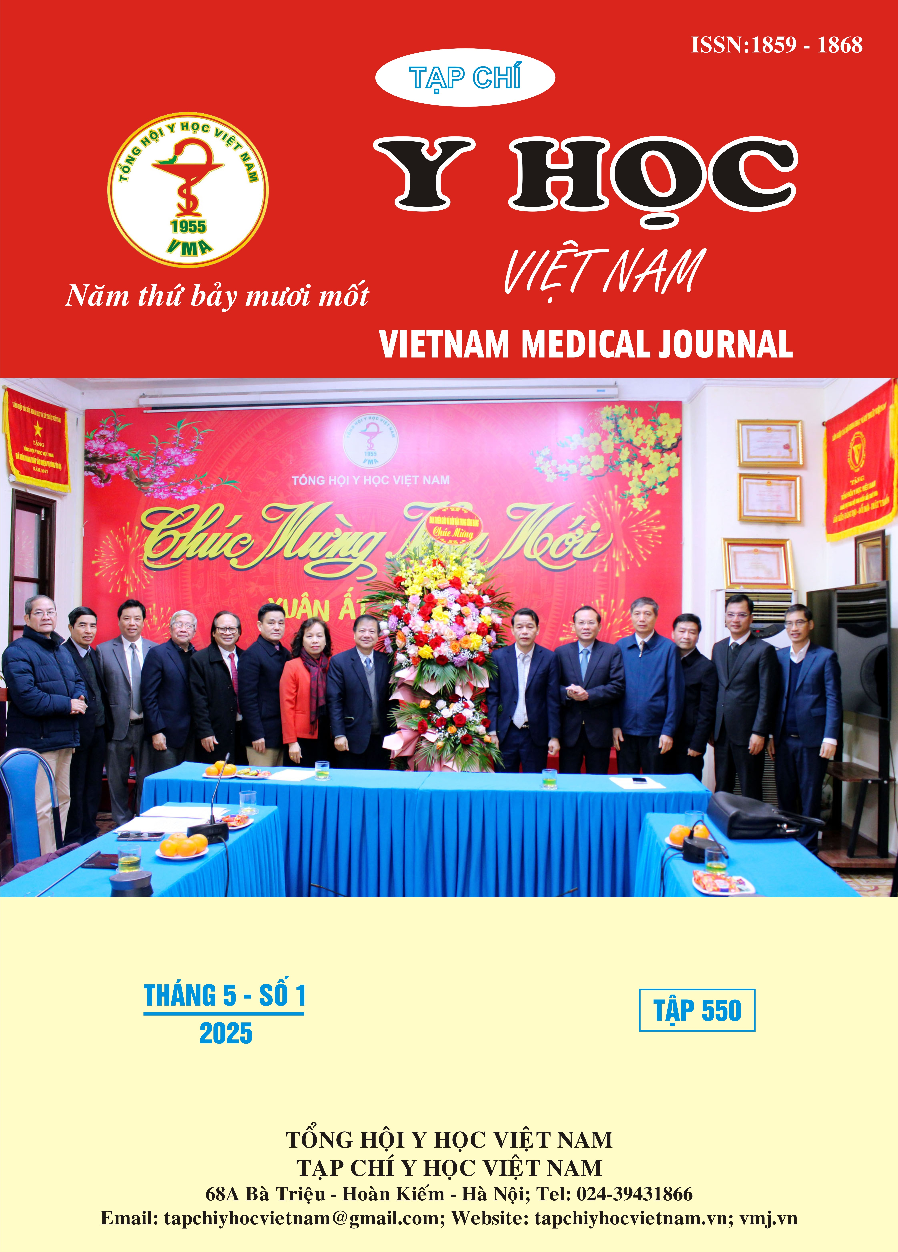THE RESULTS OF TREATMENT OF MODERATE AND SEVERE ACNE WITH ORAL ISOTRETINOIN COMBINED WITH TOPICAL AZELAIC ACID 20%
Main Article Content
Abstract
Acne is a common skin disease, often seen in adolescents, the disease has little impact on health but greatly affects aesthetics, psychology and quality of life. This clinical intervention study with a controlled group was conducted to evaluate the results of treating moderate and severe acne with oral isotretinoin combined with topical azelaic acid 20%. Patients participating in the treatment were randomly assigned to two groups, each group had 30 patients. Group 1 was treated with oral isotretinoin 20 mg/day combined with topical azelaic acid 20%; group 2 was treated with oral isotretinoin 20 mg/day. The results showed that after 12 weeks of treatment, the number of inflammatory lesions in group 1 decreased better than that in group 2 (0.77 vs. 2.10; p < 0.05), the acne severity score (Global Acne Grading System, GAGS ) in group 1 (1.2) was lower than that in group 2 (2.9; p < 0.05). The rate of acne outbreak (mild level) after 4 weeks in group 1 was lower than that in group 2 (20% vs. 36.7%); after 12 weeks of treatment, there was no outbreak in either group. Treatment of moderate and severe acne with oral isotretinoin combined with topical azelaic acid 20% was effective in reducing the number of lesions and severity. The main side effects were dry skin and dry lips, but they gradually decreased over time.
Article Details
Keywords
Acne, oral isotretinoin, azelaic acid 20%
References
2. Thiboutot DM, Dréno B, Abanmi A, et al. Practical management of acne for clinicians: An international consensus from the Global Alliance to Improve Outcomes in Acne. Journal of the American Academy of Dermatology. 2018;78(2): S1-S23.e1. doi:10.1016/j.jaad.2017.09.078
3. Nguyễn Văn Thường. Hình ảnh lâm sàng, chẩn đoán và điều trị trong chuyên ngành Da liễu. Tập 2, 2019.
4. Doshi A, Zaheer A, Stiller MJ. A comparison of current acne grading systems and proposal of a novel system. International Journal of Dermatology. 1997;36(6):416-418. doi:10.1046/j. 1365-4362.1997.00099.x
5. Nast A, Dréno B, Bettoli V, et al. European evidence-based (S3) guideline for the treatment of acne - update 2016 - short version. J Eur Acad Dermatol Venereol JEADV. 2016;30(8):1261-1268. doi:10.1111/jdv.13776
6. Dương Thị Lan. Điều trị trứng cá thông thường mức độ trung bình bằng uống isotretinoin phối hợp desloratadin. Luận văn bác sĩ Chuyên khoa II. Trường đại học Y Hà Nội, 2018.
7. Vũ Thanh Tùng, Phạm Thị Lan, Đinh Hữu Nghị. So sánh kết quả điều trị trứng cá thông thường mức độ nặng bằng phối hợp uống isotretinoin và azithromycin với uống isotretinoin và clarithromycin. Tạp chí Da liễu học Việt Nam, 2022;38:49-61.
8. Lee HE, Chang IK, Lee Y, et al. Effect of antihistamine as an adjuvant treatment of isotretinoin in acne: a randomized, controlled comparative study. J Eur Acad Dermatol Venereol. 2014;28(12):1654-1660. doi:10.1111/jdv.12403
9. Nguyễn Văn Tuấn. Kết quả điều trị trứng cá thông thường mức độ trung bình bằng uống isotretinoin phối hợp bôi Aknicare Fast. Luận văn Bác sĩ Chuyên khoa II. Trường Đại học Y Hà Nội; 2021.
10. Dương Thị Hằng. Điều trị trứng cá thông thường mức độ vừa và nặng bằng isotretinoin. Luận văn Bác sĩ Chuyên khoa II. Trường Đại học Y Hà Nội; 2019.


